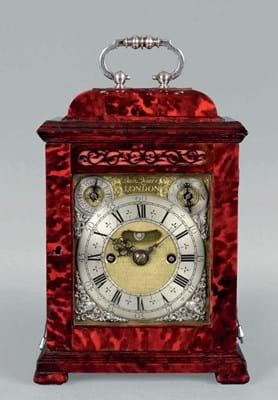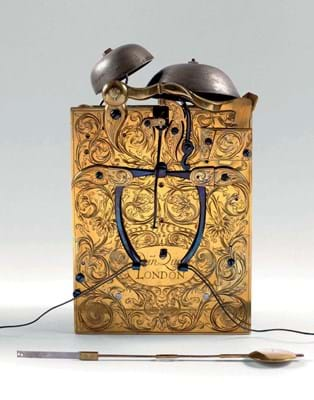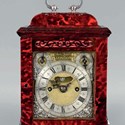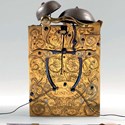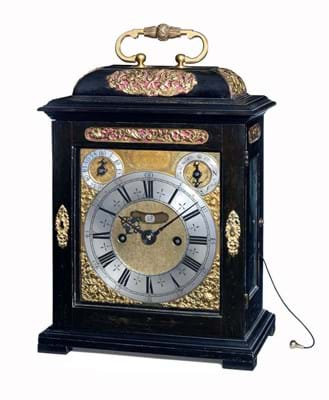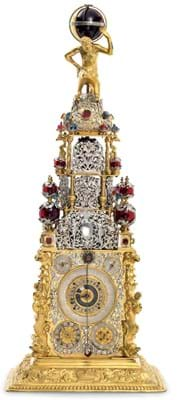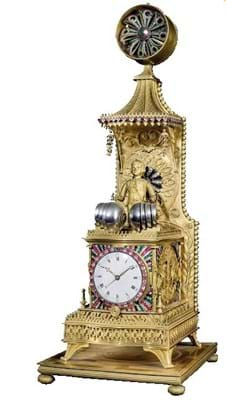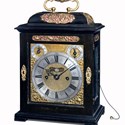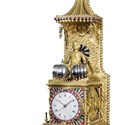Since its inception, this has been the place to see some of the best English Golden Age clocks that the market currently has to offer: the display of the Tom Scott collection by Winchester dealership Carter Marsh in 2015 providing arguably the most memorable stand of the fair’s eight showings.
This year’s event at the Royal Chelsea Hospital (June 27-July 4) includes three English horology specialists: Carter Marsh, Lewes-based Anthony Woodburn and Kensington Church Street dealer Howard Walwyn.
Woodburn’s stand will include a rare William and Mary Quare-Tompion miniature spring table clock housed in a silver-mounted, tortoiseshell-veneered case.
Although both the dial and the floral-engraved backplate are signed by Daniel Quare, both the movement and dial is typical of Thomas Tompion – something that points to the collaboration between these two ‘rival’ masters.
A contemporary recorded that Tompion could get as much as £10 for his clocks, whereas other London clockmakers could only get £4-6.
To date, half a dozen clocks with Tompion movements signed by Quare are known – including the later c.1710 miniature clock in an ebony case sold as part of the aforementioned Scott collection in 2015.
The ‘phase two’ style case of this c.1695 example stands only 9½in (24 cm) high and is surmounted by a silver carrying handle. The twin fusée movement runs for eight days and includes a silent pull quarter repeat, virtually identical to another Tompion miniature clock (No 225) made in 1695.
Month-going Quare
Walwyn (also showing at Olympia the previous week) will bring a massive 9ft 9in (2.98m) high Quare longcase from c.1700 priced in the region of £200,000.
Within a splendid case constructed principally of oak veneered with burr walnut is a month-going movement of the type that – among other innovations such as the repeating watch – helped make his reputation.
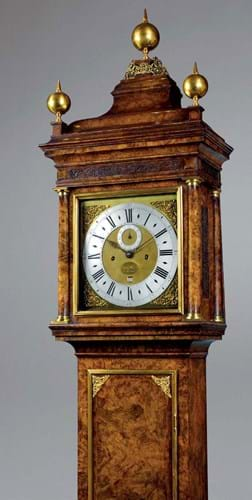
A Daniel Quare month-going longcase priced in the region of £200,000 at 'Masterpiece' from Howard Walwyn.
Around the same time, Quare, based in Exchange Alley, long a favourite home for watchmakers, had made the year-going clock for William III’s bedroom showing sundial time, latitude and longitude, and the course of the sun. Although altered by Benjamin Vulliamy in 1836, it still stands in its original spot at Hampton Court Palace.
Auction movements
Among Tompion’s many innovations was the numbering of his clocks – beginning c.1682 at a time when the business at The Dial and Three Crowns had expanded significantly. It is thought to be the first time that a serial numbering system was applied to manufactured goods.
In 1682 Tompion introduced the first ever serial numbering system – not for reasons of posterity but for accounting
Although invaluable for dating an establishing a chronology for Tompion clocks, it was done not for reasons of posterity but for accounting.
Coming up at Bonhams on July 11 is a Tompion quarter-repeating table clock numbered 244 for c.1698-1700. When purchased by the owner’s father on October 28, 1976, from dealer Ronald A Lee of Bruton Place, it had cost a substantial £13,850. Next month the estimate is £200,000-300,000.
As has become the norm, Bonhams is the only one of the major houses to conduct a stand-alone clock sale. However, there will be fine horological antiques included in both the Exceptional sale at Christie’s (July 4) and the Treasures catalogue at Sotheby’s (July 5).
Christie’s sale includes a south German ormolu, silver and gilt brass quarter striking astronomical clock by Hieronymus Syx (1680-1726) estimated at £400,000-600,000. Syx, a ‘small watchmaker’, is documented as completing this clock as his ‘masterpiece’ in 1705 – the culmination of six years of training.
The anachronistic tower format is explained by the need to follow a strict set of rules when completing a masterpiece – although a contemporary addition is the Kunkelstein glass sphere finials, a type of coloured glass in imitation of rubies invented by Johann Kunkel (1637-1703) while director of the laboratory and glass works of Brandenburg.
Sold at Lempertz in Zurich (1956) and then at Sotheby’s Amsterdam (1981), it later formed part of the Al-Tajir collection before it was acquired by the present owner.
An equally spectacular confection at Sotheby’s is a George III ormolu quarter-striking musical automaton table clock made for the Chinese market c.1790.
The enthusiasm for highly decorative and novelty British or Swiss-made watches and clocks reached its apogee in the Qing court.
This example, in original condition, is typical of the work of the Jaquet-Droz family in Switzerland or their apprentice Henri Maillardet (1745-1830), who by 1790 had established a London workshop. The estimate is £300,000- 500,000.


